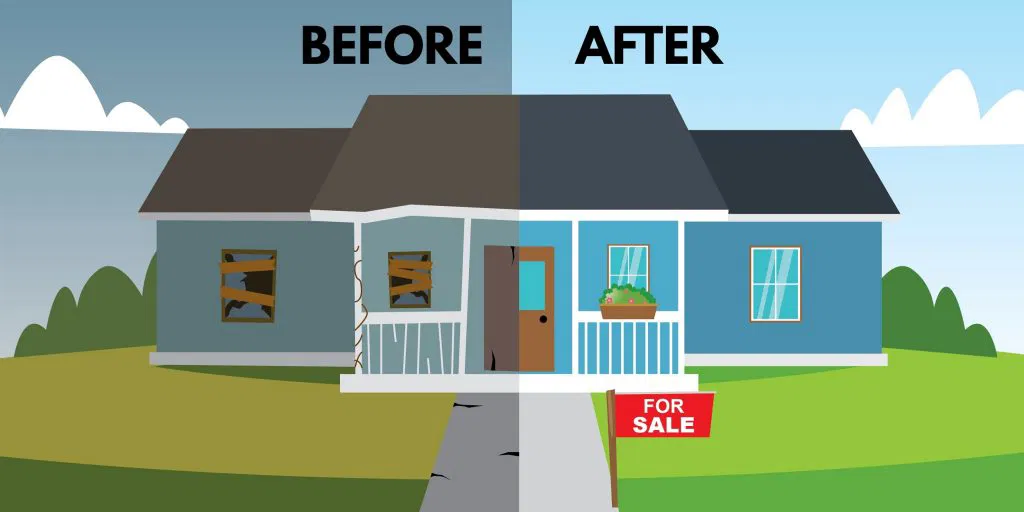October 15, 2024
Flipping properties can be a lucrative investment strategy, but it also comes with unique risks that require specialized insurance coverage. From protecting vacant homes to covering renovations, real estate investors must ensure they have the right policies in place to safeguard their investment. In this post, we’ll explore the essentials of flipped property insurance and what you need to know about insuring houses in transition.
Understanding Flipped Property Insurance Needs
When flipping a property, one of the primary challenges is that it’s often vacant for extended periods, leaving it vulnerable to theft, vandalism, and damage. Regular homeowner’s insurance may not cover these risks, which is why vacant home insurance is critical for investors. This type of policy protects the property during the renovation and selling phases, ensuring that any unforeseen events won’t derail your flip.
In addition to vacancy issues, construction insurance for flipped homes is necessary to cover any damages that occur during renovation. Whether you’re doing a minor cosmetic update or a full-scale remodel, this insurance can help cover the costs of accidents, material damage, or injuries that occur on-site. Without the right policy, you could face substantial financial loss if something goes wrong during construction.
Why Regular Homeowner’s Insurance Isn’t Enough
Many real estate investors mistakenly assume that a standard homeowner’s policy will suffice for properties they are flipping. However, typical policies don’t account for the unique risks associated with house flipping insurance needs. For example, a vacant home left unmonitored is more susceptible to issues like broken pipes, fire, or even squatters. If the property is undergoing renovations, a standard policy won’t cover damages caused by construction work.

For investors, short-term property insurance is a better option. This type of policy is specifically designed for properties that won’t be occupied for long periods and will eventually be sold. It includes provisions for both vacancy and renovation risks, ensuring comprehensive coverage for the duration of the flip.
Types of Coverage Real Estate Investors Need
To protect your investment fully, there are several types of insurance coverage you should consider:
- Vacant Home Insurance: Covers your property while it’s unoccupied, including risks like vandalism, theft, and weather damage.
- Renovation Insurance Coverage: Protects against damages or losses incurred during the renovation process, including material theft, accidents, and contractor errors.
- Short-Term Property Insurance: This is ideal for investors who will own a property for a limited time during the flipping process. It bundles vacant home insurance and construction insurance to provide all-around protection.
- Liability Insurance: If a contractor or visitor is injured on the property, liability coverage will protect you from potential lawsuits, ensuring you don’t have to pay out-of-pocket for medical expenses or legal fees.
Common Risks for Property Investors
Flipping houses is a dynamic investment strategy, but it comes with risks beyond just renovation risk insurance. Below are some of the most common risks real estate investors face when flipping homes:
- Theft and Vandalism: Vacant properties are prime targets for theft, particularly of construction materials and tools. Vacant home insurance can help mitigate these risks.
- Property Damage During Renovation: Construction work increases the likelihood of structural damage. Whether it’s accidental damage or contractor mistakes, construction insurance for flipped homes will ensure you’re covered.
- Injury on Site: If a contractor or subcontractor is injured on your property, you could be liable for medical bills. Liability insurance will protect you from these unexpected expenses.
How to Save on Flipped Property Insurance
While insurance is essential, there are ways to save without sacrificing coverage:
- Bundle Policies: Consider combining vacant home insurance, renovation insurance, and liability insurance into a single package to reduce premiums.
- Choose a Higher Deductible: Opting for a higher deductible can lower your monthly premium, though you’ll pay more out of pocket in case of a claim.
- Work with an Experienced Agent: A knowledgeable insurance agent can help you navigate the best options for your specific needs, ensuring you don’t overpay for unnecessary coverage.
Flipping homes is a rewarding but risky venture, and the right house flipping insurance is key to protecting your investment. From vacant home insurance to renovation insurance coverage, real estate investors must take a proactive approach to managing the risks associated with these short-term properties. By ensuring you have comprehensive flipped property insurance, you can focus on what you do best—transforming homes and turning a profit.
If you’re a real estate investor looking for tailored insurance solutions for your flipped properties, contact us today to discuss the right policies for your next project.
